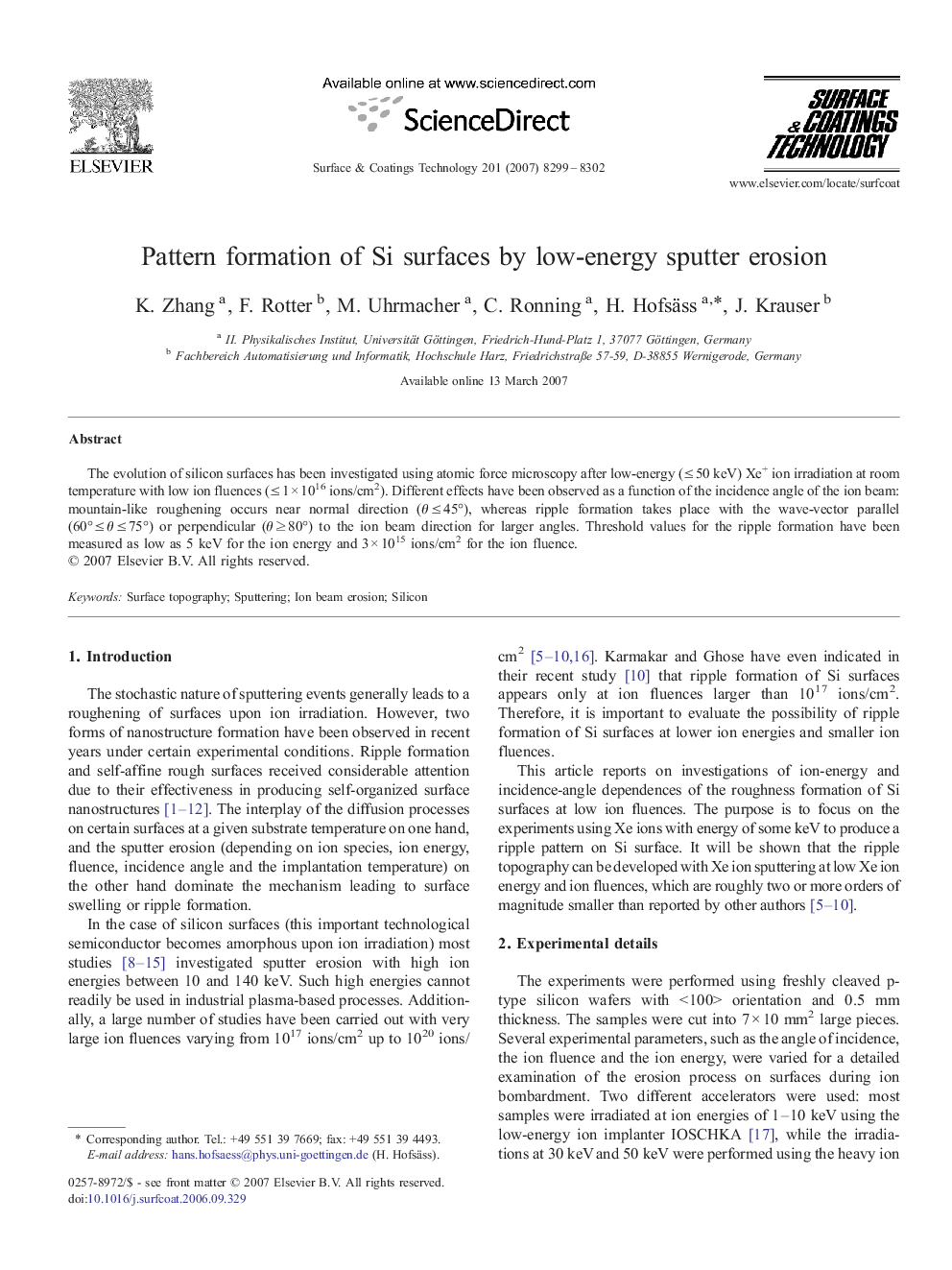| Article ID | Journal | Published Year | Pages | File Type |
|---|---|---|---|---|
| 1663008 | Surface and Coatings Technology | 2007 | 4 Pages |
Abstract
The evolution of silicon surfaces has been investigated using atomic force microscopy after low-energy (â¤Â 50 keV) Xe+ ion irradiation at room temperature with low ion fluences (â¤Â 1 Ã 1016 ions/cm2). Different effects have been observed as a function of the incidence angle of the ion beam: mountain-like roughening occurs near normal direction (θ â¤Â 45°), whereas ripple formation takes place with the wave-vector parallel (60° â¤Â θ â¤Â 75°) or perpendicular (θ â¥Â 80°) to the ion beam direction for larger angles. Threshold values for the ripple formation have been measured as low as 5 keV for the ion energy and 3 Ã 1015 ions/cm2 for the ion fluence.
Keywords
Related Topics
Physical Sciences and Engineering
Materials Science
Nanotechnology
Authors
K. Zhang, F. Rotter, M. Uhrmacher, C. Ronning, H. Hofsäss, J. Krauser,
